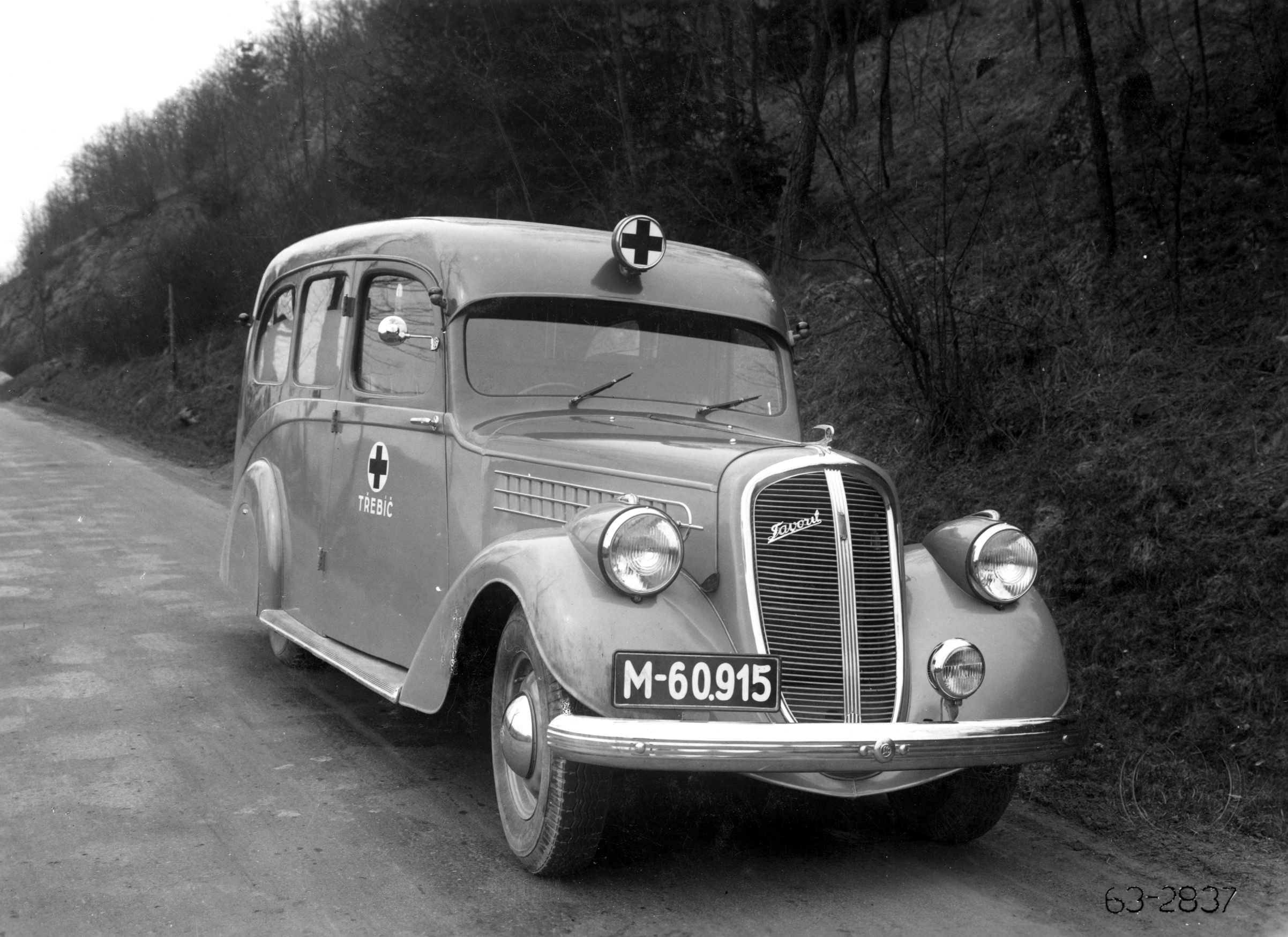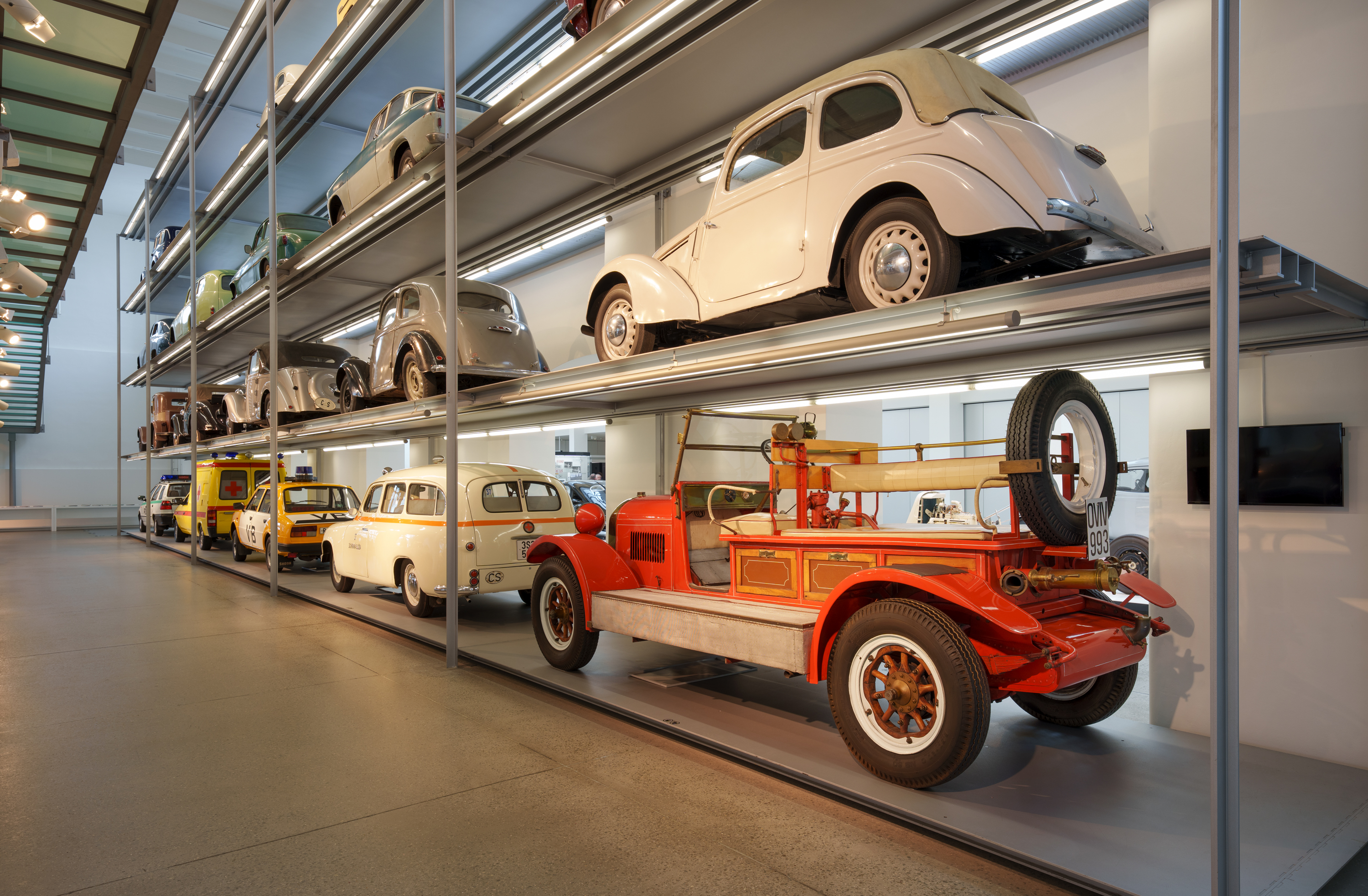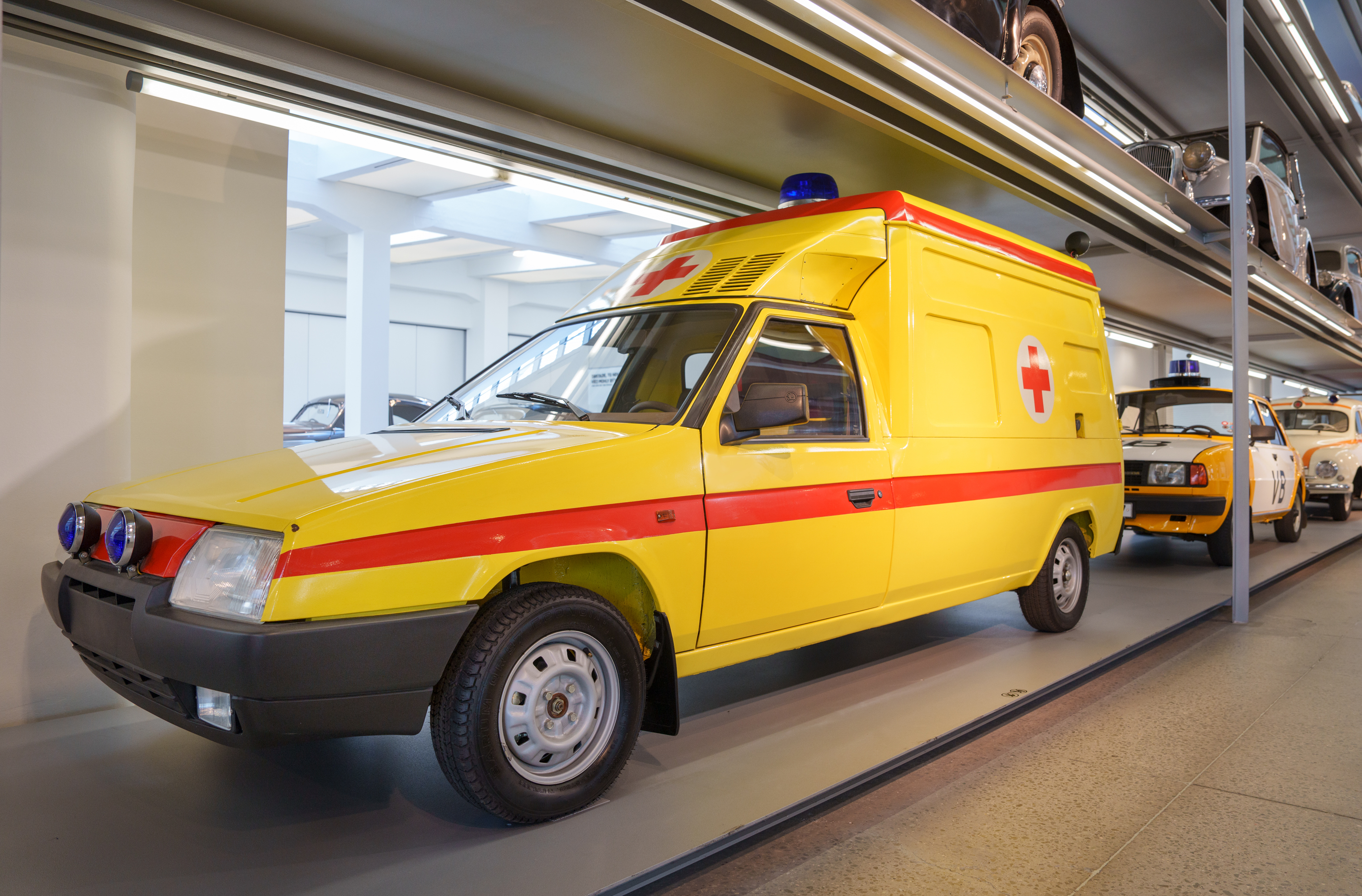The first to go into service was a VOITURETTE C-type with an extended wheelbase in 1906. It was used as a military ambulance to carry four stretchers in two bunks. Production of ambulances and fire trucks really took off during the First World War: the Mladá Boleslav factory turned out around a hundred reliable Laurin & Klement ambulances a year.
 Laurin & Klement vehicles were used as military ambulances, for example.
Laurin & Klement vehicles were used as military ambulances, for example.
Before the Second World War, chassis of all categories of ŠKODA cars were used for the manufacture of ambulances, the smallest being the 3,850 mm long POPULAR 995 Liduška, while the larger RAPID, FAVORIT and SUPERB models with a wheelbase of up to 3,415 mm offered greater speed, spaciousness and comfort. Lightweight open “emergency vehicle bodies” were also built in Mladá Boleslav on the chassis of the same models. For example, these allowed gendarmes or customs officers to easily jump out when chasing a suspect. Firefighters were provided with a wide range of modern ŠKODA commercial vehicles, culminating in the 606 and 806 models, i.e. six-cylinder vehicles with a cargo capacity of 6 or 8 tonnes.
 A ŠKODA FAVORIT 904 in the service of the hospital in Třebíč.
A ŠKODA FAVORIT 904 in the service of the hospital in Třebíč.
In May 1946, a year after the end of the war, production of ambulances based on ŠKODA 1101/1102 “Tudor” chassis started in Vrchlabí. With 1,100 litre engines delivering 23.5 kW, they could reach 90–100 km/h, and they saved lives even as far away as Cairo, Egypt. The compact and agile “Tudor” had a partition next to the driver that curved forward to accommodate a cot. The paramedic used a fold-down seat. Security forces around the world appreciated the ŠKODA 1101 P (police) “combat Tudors”, which, in the hands of an experienced driver and on suitable tyres, could do wonders in rough terrain even without all-wheel drive.
 A postwar ŠKODA 1101 as an ambulance in Egypt
A postwar ŠKODA 1101 as an ambulance in Egypt
70 years ago, production of a 4.6 metre long ambulance derived from the ŠKODA 1200 STW estate, which could fit two cots side by side, began in Kvasiny. In 1961, the ŠKODA 1202 ambulances took up the baton, with innovations including the addition of two coil springs to the rear leaf suspension system. But it was the legendary ŠKODA 1203, however, with its bonnet-less body, internal volume of over 5 m3 and overall length of only about 4.5 metres, that became the Czech carmaker’s most widely used ambulance.
 The ŠKODA 1203 had many modifications, but the classic one was the ambulance.
The ŠKODA 1203 had many modifications, but the classic one was the ambulance.
A major qualitative leap came in the late 1980s with the arrival of a new generation of front-wheel drive, transverse-engine ŠKODAs. This made it possible to lower the floor at the rear of the car and put virtually any superstructure on it. Although the ŠKODA FAVORIT 788 from 1992 never made it into production, the FORMAN and FORMAN PLUS vans (1990-1995) went into service in hospitals. These were followed by ambulance versions of the FELICIA COMBI (1995-2001) and, after 1998, the OCTAVIA COMBI.
 A ŠKODA FORMAN was used by the ambulance service in Mladá Boleslav at the start of the 1990s.
A ŠKODA FORMAN was used by the ambulance service in Mladá Boleslav at the start of the 1990s.
The current exhibition at the ŠKODA Museum featuring five rare ŠKODA utility vehicles will run until the beginning of October this year.


























